Ever thought scars could just disappear? Good news: with the right techniques, you can soften those stubborn scars. This guide will teach you how to massage scar tissue effectively, helping your healing process.
Scar tissue is our body’s way of healing injuries. It acts like a Band-Aid, but sometimes it gets too thick. When collagen cells overwork, they create stiff patches that limit movement and cause pain. But there’s a way to fix this. By learning to massage scar tissue, you can make these areas softer and regain your body’s flexibility.
Key Takeaways
- Scar tissue massage helps break down tough, inflexible areas
- Proper techniques can improve flexibility and reduce pain
- Massage can be applied to scars on skin, muscles, and other tissues
- Regular scar tissue massage promotes optimal healing
- Breaking down scar tissue can enhance range of motion
Understanding Scar Tissue Formation
Scar tissue is a natural part of healing. When we get hurt, our body repairs the damage. This repair creates scar tissue, affecting both inside and outside our body.
What is scar tissue?
Scar tissue is made of fibrous tissue that replaces damaged skin or tissues. It’s stronger than regular tissue but can be uncomfortable. Many people look for ways to treat scar tissue to make it less noticeable and improve movement.
The process of scar tissue development
Scar tissue forms in three stages. First, inflammation happens as our body fights off infection. Then, new tissue grows to close the wound. Finally, the scar matures and gets stronger. This last stage can take weeks or months, depending on the injury’s severity.
Types of scars and their characteristics
Different scars need different treatments. Flat scars are the most common. Raised scars, like keloids, can grow bigger than the original wound. Some scars, called contractures, can limit movement. Stretch marks are also a type of scar.
Knowing the type of scar you have is important for choosing the right treatment. Whether it’s massage, creams, or other treatments, understanding your scar type is key to effective healing.
The Importance of Scar Tissue Management

Scar tissue management is key to healing after injuries or surgeries. I’ve seen how good care can greatly improve recovery. Without it, scars can cause many problems that affect our daily lives.
Good scar tissue management helps scars move better and heals tissue well. This makes collagen fibers line up right, which lowers the chance of too much scar tissue. Treatments like physical therapy work better than not treating scars at all.
- Enhanced flexibility and range of motion
- Reduced pain and discomfort
- Improved circulation in the affected area
- Prevention of adhesions and tissue restrictions
- Better overall healing outcomes
A full approach to scar management is best. This usually means using massage, stretching, and creams. Starting scar care early and keeping it up helps avoid long-term issues and aids in healing.
| Scar Management Technique | Benefits | Frequency |
|---|---|---|
| Scar Massage | Improves scar mobility, reduces adhesions | 2-3 times daily |
| Stretching Exercises | Enhances flexibility, prevents contractures | 1-2 times daily |
| Silicone Gel Sheets | Softens and flattens scars | 12-23 hours daily |
Every scar is different, so treatments must fit each person’s needs. Talking to a healthcare expert can help find the best scar care plan for you.
How to Massage Scar Tissue to Break It Down
Effective scar tissue massage can greatly improve healing and reduce pain. I’ll show you how to massage scar tissue to break it down. This will help you get the best results from your efforts.
Preparation for scar massage
Before starting, make sure your wound is fully healed. Remove any staples, steri-strips, or scabs. Clean your hands and the scar area well. Apply a gentle, unscented lotion to keep the skin moist during massage.
Step-by-step massage techniques
To effectively break down scar tissue:
- Use the pad of your thumb or fingers
- Apply circular motions directly on the scar
- Use enough pressure to move the scar and skin
- The skin should blanch under your finger
- Massage adjacent areas, moving the skin in all directions
Frequency and duration of massage sessions
For the best results, massage your scar daily for the first 6 months. Then, reduce to 3-4 times a week until the scar matures. Each session should last 5-10 minutes. Be gentle and watch for signs of irritation or damage. If you feel any discomfort, talk to your healthcare provider.
Remember, being consistent is crucial when learning to massage scar tissue. With patience and the right technique, you can improve your scar’s appearance and flexibility.
Benefits of Scar Tissue Massage
Scar tissue massage is a powerful treatment for scars. It helps improve how scars look and work. Regular massages can really help break down scar tissue and aid in healing.
Scar massage is great for reducing pain and improving flexibility. It gently works on the scar tissue. This makes patients feel less pain and move better, especially near joints.
It also boosts blood flow to the scar. This helps heal faster and break down scar tissue. More blood flow means more nutrients and oxygen for healthier skin.
- Reduces scar tissue appearance
- Decreases inflammation and redness
- Improves skin elasticity
- Helps flatten raised scars
- Desensitizes painful areas
Regular scar massage can make scars look smoother and softer. It can even flatten out bumps or ridges. This is great for those worried about how their scars look.
“Scar tissue massage has transformed not only the appearance of my scar but also how I feel about it. It’s become a part of my daily routine, and the results are amazing.”
Scar tissue massage is a key part of healing. It helps with physical issues and boosts confidence. As scars fade, they become less of a concern.
Additional Scar Tissue Treatment Options
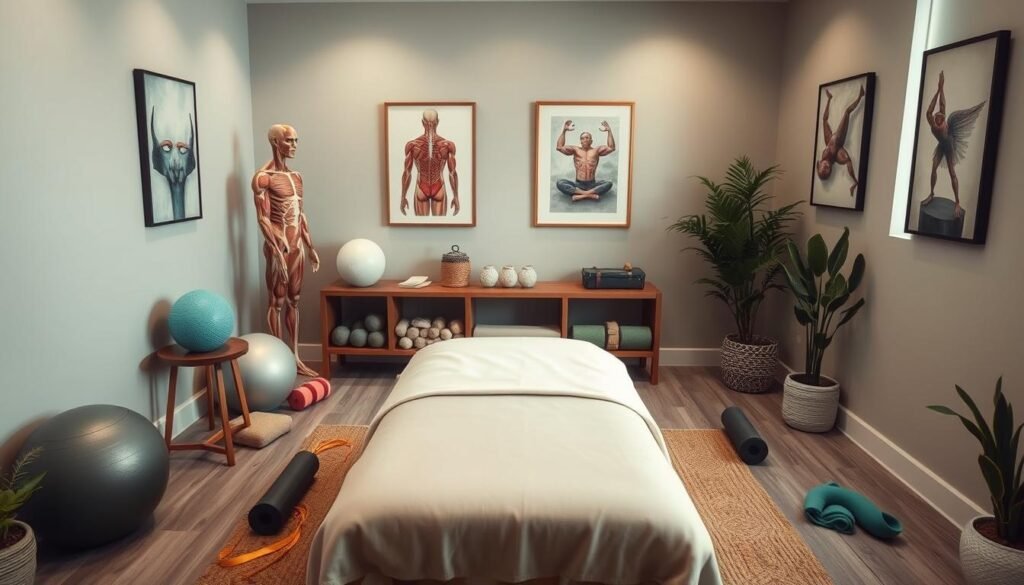
Scar tissue management isn’t just about massage. I’ve found many effective treatments to break down tough scar tissue and improve movement. Let’s look at some options that work well with traditional massage.
Physical Therapy Modalities
Physical therapy has powerful tools for treating scar tissue. Therapists use exercises and stretches to improve blood flow and range of motion. They might also use Active-Release Therapy (ART) to release adhesions.
During my sessions, I learned important home care techniques. These help me continue treatment between visits.
Soft Tissue Mobilization Techniques
Soft tissue mobilization is a hands-on method that targets scarred areas. It involves moving and manipulating tissue to lessen pain and increase flexibility. Regular sessions greatly improved my scar’s look and feel.
Instrument-Assisted Soft Tissue Mobilization (IASTM)
IASTM uses special tools to treat scar tissue more effectively. These tools help therapists reach deeper into tissues, promoting healing and reducing adhesions. My experience with IASTM was positive, as it seemed to speed up scar tissue breakdown.
Using these treatments with myofascial release for scars can lead to great results. A mix of different soft tissue mobilization techniques offers the best chance for managing scar tissue effectively.
Precautions and Considerations for Scar Massage
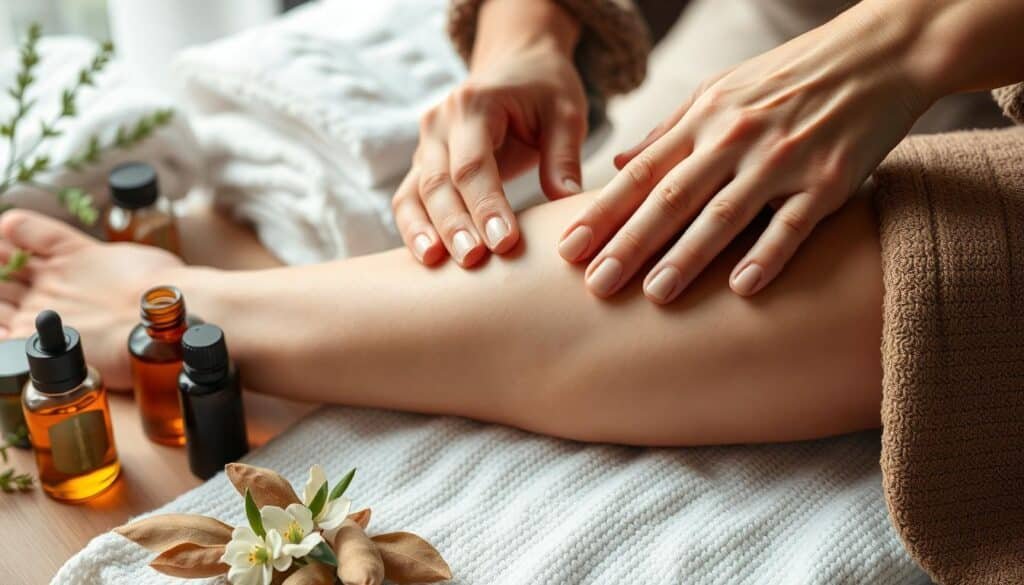
When managing scar tissue, safety is my top priority. Massage can help reduce scars, but it must be done carefully. It’s important to use gentle pressure to avoid causing harm or pain.
I watch my skin closely during massage. If I see blisters, open wounds, or rashes, I stop right away. These signs mean the massage is too harsh for my skin.
Protecting my scars from the sun is also crucial. I cover them for at least a year after an injury or surgery. Then, I use sunscreen to shield the sensitive skin from UV rays.
Before starting scar massage, I always check with my doctor. This is especially true after surgeries like Mohs. Their okay makes sure my scar is ready for massage.
I’m careful when massaging scars near joints or bones. These areas are more sensitive and need a softer touch. If I feel pain or discomfort, I stop and ask my doctor for advice.
| Precaution | Action |
|---|---|
| Pressure | Use gentle, not forceful |
| Skin Reaction | Stop if blistering or rash occurs |
| Sun Exposure | Cover scar for 1 year, use sunscreen after |
| Medical Approval | Get doctor’s okay before starting |
| Sensitive Areas | Extra care near joints and bones |
Combining Scar Massage with Other Healing Techniques
I’ve found that mixing scar massage with other healing methods can really help. Let’s look at some scar tissue remedies that work well together.
Exercise and Stretching
Regular exercise and stretching are key for better scar mobility. I stretch the area around my scar every day. This keeps the scar tissue from getting too tight and limits movement.
Simple exercises like arm circles or leg lifts, depending on the scar’s location, can make a big difference.
Topical Treatments and Moisturizers
Keeping my scar hydrated is crucial. I use unscented lotions or vitamin E oil to moisturize it. These treatments help soften the scar tissue and aid in healing.
I apply them after my massage sessions for better absorption.
Nutrition for Optimal Healing
What I eat is important for scar healing. Foods rich in vitamins C and E, zinc, and protein help repair tissue. I eat lots of fruits, vegetables, lean meats, and nuts to support healing.
| Technique | Benefit | Frequency |
|---|---|---|
| Scar Massage | Breaks down scar tissue | 2-3 times daily |
| Stretching | Improves flexibility | Daily |
| Moisturizing | Softens scar tissue | After massage |
| Nutrient-Rich Diet | Supports tissue repair | Ongoing |
By using these techniques together, I’ve seen big improvements in my scar. It’s key to be consistent and patient with these remedies. If you’re unsure, talk to a healthcare provider to find the best plan for you.
When to Seek Professional Help for Scar Treatment
Many people wonder when to get help for scar tissue. If a scar hurts a lot or limits your movement, it’s time to see a pro. Scar tissue experts can make a plan just for you.
Physical therapists are excellent for scar treatment. They teach you how to massage your scar right. They also tell you when to start. Their advice is key for managing scar tissue well.
Sometimes, you might need surgery to fix a scar. If your scar looks or feels different, talk to your doctor. Early action in scar care can really help.
FAQ
What is scar tissue?
Why is scar tissue management important?
When can I start massaging my scar?
How do I perform scar tissue massage?
What are the benefits of scar tissue massage?
What other treatment options are available for scar tissue management?
What precautions should I take when massaging scar tissue?
Can I combine scar massage with other healing techniques?
When should I seek professional help for scar treatment?
Source Links
- Scar Massage—How to Promote Healing – https://www.kidney.org/scar-massage-how-to-promote-healing
- Massaging a Scar After Mohs Surgery: When Can You Do It? | Dermatology and Skin Health – Dr. Mendese – https://dermskinhealth.com/massaging-a-scar-after-mohs-surgery/
- Scar Tissue Treatment Options | BenchMark Physical Therapy – https://www.benchmarkpt.com/blog/scar-tissue-treatment-options/

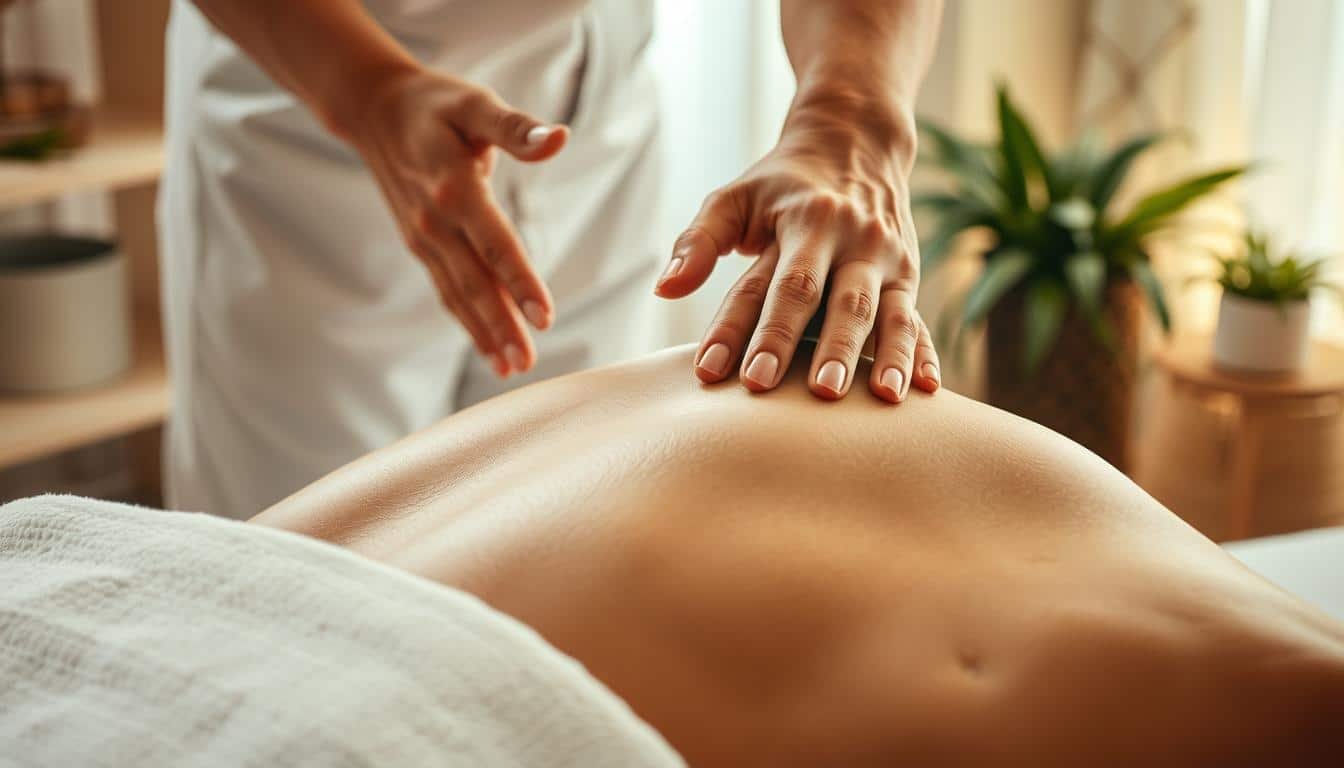









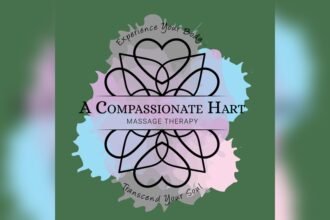
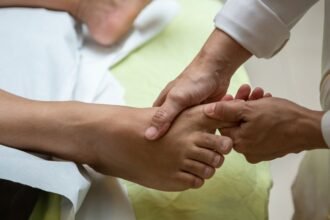
7 Comments
Interesting read! But is it possible to completely eliminate scar tissue with massage, or just improve its flexibility?
Interesting read! But does the type of massage matter in breaking down scar tissue or is any method effective?
Has anyone considered that scar tissue might serve a purpose, rather than just needing to be broken down?
Isnt it true that genetics play a significant role in scar tissue formation too, not just the healing process itself?
Interesting read! Has anyone tried these methods and seen actual results in breaking down scar tissue? Would love to hear experiences.
Interesting piece. But, does the type of massage matter in breaking down scar tissue? Swedish vs deep tissue, for instance?
Interesting read! But wouldnt breaking down scar tissue potentially cause more harm than good? Is this process safe for all ages?